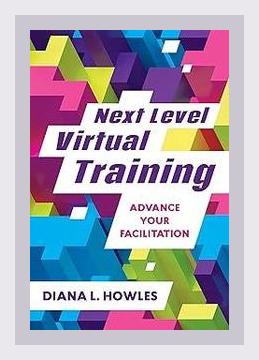Human Resources and Talent ManagementHR Technology
Introduction
“HR Analytics Handbook” by Taha Amir is a quintessential guide for HR professionals seeking to leverage data analytics to solve business problems. The book operates at the intersection of HR technology and business strategy, providing actionable insights into how HR analytics can transform an organization’s approach to managing human capital. In this summary, we will explore the major points discussed in the book, along with concrete examples and actionable steps that can be employed to implement these strategies.
Part I: Understanding HR Analytics
1. What is HR Analytics?
- Key Point: HR Analytics involves making data-driven decisions to manage human resources effectively.
- Action: Establish a clear definition and scope of HR analytics within your organization by identifying key metrics—such as employee turnover rate, time-to-hire, and employee engagement scores—that align with business goals.
- Example: A retail company can use HR analytics to track seasonal hiring needs and predict future staffing requirements based on sales data trends.
2. The Importance of HR Analytics
- Key Point: HR Analytics enables organizations to make informed decisions, resulting in improved efficiency and productivity.
- Action: Formulate a business case for HR analytics by highlighting potential ROI and cost savings. This could involve analyzing the cost of employee turnover and demonstrating how predictive analytics can reduce this expense.
- Example: An IT firm realized a 20% reduction in turnover by using predictive analytics to identify at-risk employees and implementing targeted retention strategies.
Part II: Building an HR Analytics Function
3. The HR Analytics Team
- Key Point: A successful HR analytics team requires diverse skills, including data science, HR expertise, and business acumen.
- Action: Assemble a cross-functional team and train them in HR-specific analytics. Integrate roles such as data engineers, analysts, and HR specialists.
- Example: A multinational corporation developed an internal training program to upskill HR professionals in data science, resulting in a 15% improvement in HR process efficiency.
4. Data Collection and Management
- Key Point: Quality data is fundamental for valuable insights. Effective data collection and management methods are essential.
- Action: Implement robust data governance policies and ensure data is collected consistently from reliable sources.
- Example: An airline improved its recruitment process by integrating applicant tracking system (ATS) data with performance metrics, enabling better candidate evaluation.
Part III: Applying HR Analytics
5. Recruitment Analytics
- Key Point: Recruitment analytics can significantly enhance hiring processes by identifying the best sources of talent and predicting candidate success.
- Action: Use data to analyze sourcing channels and optimize recruitment marketing spend. Utilize machine learning models to predict candidate success based on past hiring data.
- Example: A tech startup increased their hiring efficiency by 30% by using predictive analytics to screen resumes and prioritize candidates with the highest probability of success.
6. Employee Development and Training
- Key Point: Analytics can personalize employee development plans and measure training effectiveness.
- Action: Implement learning management systems (LMS) that track employee progress and generate reports on the effectiveness of training programs.
- Example: An insurance company created tailored training modules for junior employees based on performance data, leading to a 25% increase in productivity.
7. Performance Management
- Key Point: Performance management can be revolutionized through data analytics by ensuring fair and objective evaluations.
- Action: Adopt performance management software that uses data analytics to track and assess employee performance against key metrics.
- Example: A financial services firm reduced biases in performance reviews by integrating 360-degree feedback and performance data analytics, resulting in a more equitable appraisal system.
8. Employee Retention
- Key Point: Predictive analytics can identify factors leading to employee turnover and help implement effective retention strategies.
- Action: Develop predictive models to identify employees at risk of leaving and proactively address their concerns through targeted interventions.
- Example: A healthcare provider reduced its nursing staff turnover by 18% by using predictive analytics to identify at-risk employees and offering them development opportunities and enhanced benefits.
Part IV: Challenges and Future Trends
9. Overcoming Implementation Challenges
- Key Point: Common challenges in implementing HR analytics include data privacy concerns, resistance to change, and skill gaps.
- Action: Engage stakeholders early and address data privacy issues by implementing stringent data protection measures. Provide training programs to bridge skill gaps.
- Example: An educational institution successfully implemented HR analytics by conducting workshops for staff to ease apprehension and address privacy concerns through transparent communication and robust data protection protocols.
10. Future Trends in HR Analytics
- Key Point: Emerging trends such as artificial intelligence (AI), machine learning (ML), and advanced data visualization are shaping the future of HR analytics.
- Action: Stay updated with the latest trends by subscribing to HR analytics journals, attending industry conferences, and participating in professional networks.
- Example: A manufacturing company adopted AI-driven chatbots for employee engagement, leading to a 15% increase in employee satisfaction as measured by periodic surveys.
Conclusion
Taha Amir’s “HR Analytics Handbook” elucidates the transformative potential of data analytics in HR management. By integrating robust analytics practices, organizations can make data-driven decisions that enhance their overall efficiency, productivity, and employee satisfaction. The book offers comprehensive guidance—from understanding the fundamentals of HR analytics to addressing implementation challenges and recognizing future trends. By adhering to the actionable steps derived from the book’s insights, HR professionals can significantly improve their strategic impact.
In summary, “HR Analytics Handbook” is an invaluable resource for HR practitioners eager to harness the power of data to solve business problems and optimize human capital management.
